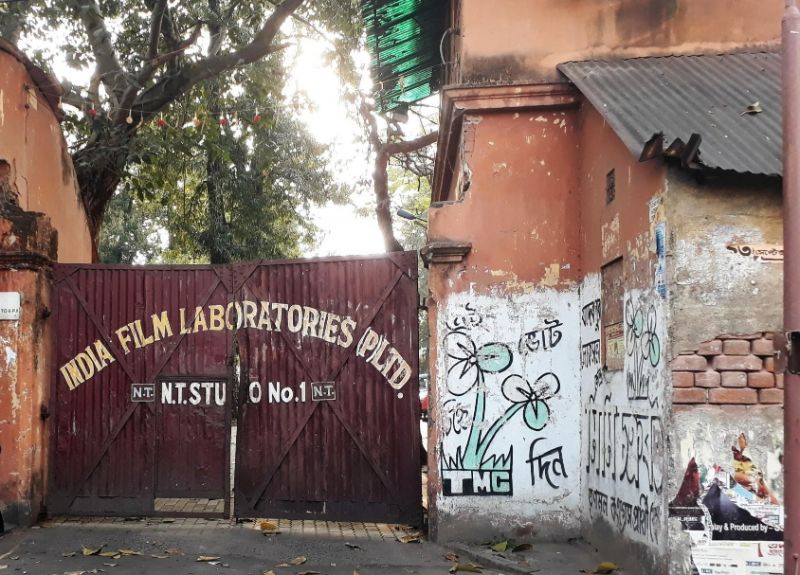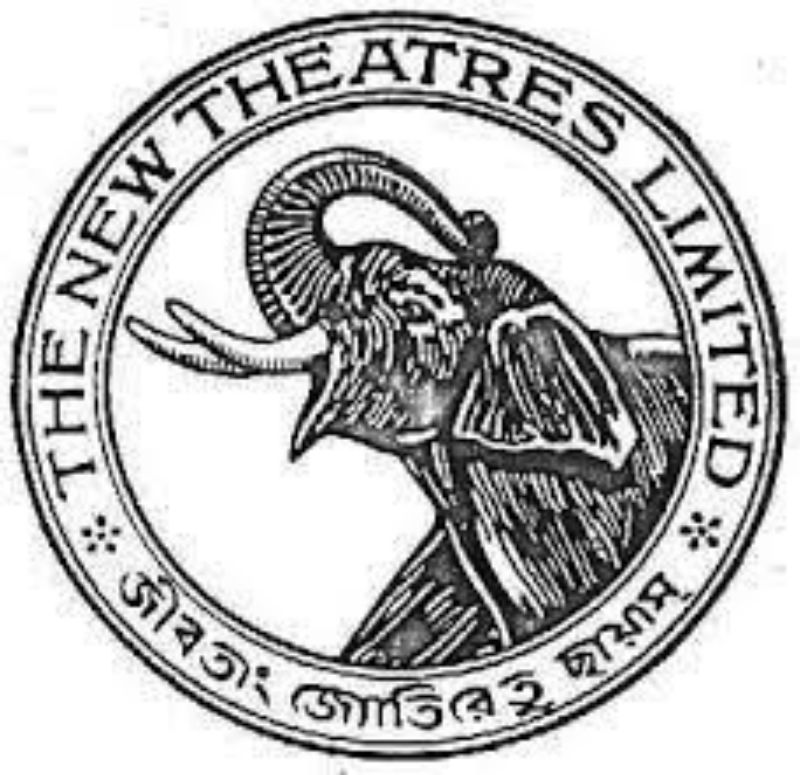
New Theaters 1
Address: Chandi Ghosh Road
Years Active: 1930-present
First Film: Chorkanta
Language: Bengali
Director: Charu Ray
Released on: 03.04.31 at Chitra
When dreams, beliefs and ideals merge, it gives rise to New Theatres. At least, that’s what happened in the case of BN Sircar. He personally tried to ensure that good films could be screened in a good ambience. A plot of 10 bighas of land in Tollygunje was taken on lease from the sons of the owner of Basanti Cotton Mills —Sir BC Mitra. After clearing the dense jungle, room was made to build two studio floors, a laboratory, a sound room and a music room. Mango, plum and litchi trees were planted in the open spaces. The ghats around the ponds were cemented. So were the shadowy nests under the bulletwood trees. Soon, the flower garden was in full bloom. A few deer were left to graze there. BN Sircar became the managing director of the studio. PN Roy was asked to helm the studio. Nitin Bose headed the technical department. Casting was done by Amar Mullick. The Studio Number 1 of New Theatres opened its doors on September 19, 1930. Later, it came to be known as NT 1.
First came the studio. The cinema — Chitra —also opened its doors soon after. Initially, two silent films were made under the banner of International Filmcraft. The next aim was to make bigger films. Saratchandra Chattopadhyay’s Dena Paona was chosen for adaptation. Premankur Atarthi was given the charge of directing. Raichand Boral, Mukul Bose and Nitin Bose came in to assist him in the music, sound and camera departments respectively. Durgadas Bandyopadhyay and Nibhanani Devi were cast in the lead. That’s how the age of New Theatres in the Bengali film industry began.Soon, the studio started producing films that had historic relevance. Natir Puja, Chandidas, Debdas, Bhagyachakra, Mukti, Didi, Bidyapati, Jiban Maran, Daktar, Kashinath, Udayer Pathe came out in close succession. Most of them were bilingual films. Hindi and Urdu films were made. Among them were Mohabbat Ke Ansu, Zinda Lash, Subah Ka Sitara, Puran Bhakat and Daku Mansoor. It was New Theatres that gave birth to directors like Debaki Kumar Bose, Nitin Bose, Bimal Roy, Phani Majumdar, Kedar Sharma, musical legends like Raichand Boral and Pankaj Mullick, and stars like KC Dey, Pramathesh Barua, KL Saigal, Prithviraj Kapoor, Pahari Sanyal, Asitbaran, Basanta Chowdhury, Umashashi, Chandrabati Devi, Bharati Devi and Arundhati Devi. It is not just Bengal… New Theatres has a coveted space in the Indian film industry.Yet, New Theatres did not have an uninterrupted run. Financial crisis plagued the studio in the mid-1950s. The famous banner with the elephant emblem stopped producing films. The court cases involving the loans incurred by the production house dragged on till a receiver was placed. It was only in 2001 that New Theatres again got back its logo. The New Theatres’ studio had a different path. Running it was the responsibility of India Film Lab. During that crisis period in the 1950s, the India Film Lab started functioning as a separate entity in a portion of the studio’s land. Its shareholder was BN Sircar’s son, Dilip Sircar. Even Kanan Devi, Uttam Kumar, Asit Chowdhury and RB Mehta owned its shares. It was India Lab that took over the responsibility of running the lab. That is how the New Theatres studio continued to function even when its productions stopped. Later, Asit Chowdhury got the sole ownership of India Lab. His heir, Ramlal Nandy, still runs the studio.
Selected Bengali Filmography
Chorkanta (1931, silent), Chashar Meye (1931, silent), Dena Paona (1931), Natir Puja (1932), Chirakumar Sabha (1932), Chandidas (1932), Sita (1933), Ruplekha (1934), Debdas (1935), Bhagyachakra (1935), Didi (1937), Mukti (1937), Bidyapati (1938), Sathi (1938), Sapure (1939), Rajat Jayanti (1939), Jiban Maran (1939), Daktar (1940), Parichoy (1941), Pratishruti (1941), Priyo Bandhabi (1943), Kashinath (1943), Udayer Pathe (1944), Dui Purush (1945), Nurse Sisi (1947), Anjangarh (1948), Mahaprasthaner Pathe (1952), Bakul (1954)
Films shot at New Theatres studio:
Swamiji (1949), Nababidhan (1954), Kankabatir Ghat (1955), Raikamal (1955), Bicharak (1959), Nil Akasher Niche (1959), Jhinder Bondi (jointly with NT2, 1961), Deya Neya (1963), Uttar Falguni (1963), Shesh Anka (1963), Charulata (1964), Jatugriha (jointly with NT2, 1964), Golpo Holeo Sotti (1966), Nayak (jointly with NT2, 1966), Chiriakhana (Jointly with NT2, 1967), Balika Badhu (1967), Nishipadma (1970), Calcutta 71 (1971), Stree (1972), Chhutir Phande (1975), Sanyasi Raja (1975), Babumasai (1978), Parabat Priya (1984), Pratigya (1985), Shatru (1986), Atanka (1986), Amar Sangi (jointly with Technicians’ 1 and 2, 1986), Gurudakshina (1987), Kori Diye Kinlam (jointly with NT2, 1989), Tufan (1989), Badnam (1990), Juganta (1995), Dahan (1997), Sindur Khela (1999)
Did You Know?
It is often mentioned that playback was first introduced during the making of Bhagyachakra at New Theatres. But rarely does this highlight how sound recordist Mukul Bose, along with Bani Dutta, had invented India’s first playback machine right here at the New Theatres Studio. They could have easily imported playback machines. Instead, Mukul, who was held dear by Jagadish Chandra Bose, was keen on making the machine himself. After Banadas Chattopadhyay’s Systophone, this was perhaps the greatest contribution of Bengal in sound engineering.




